The Sky's the Limit
– for Viborg’s Ouros Animation
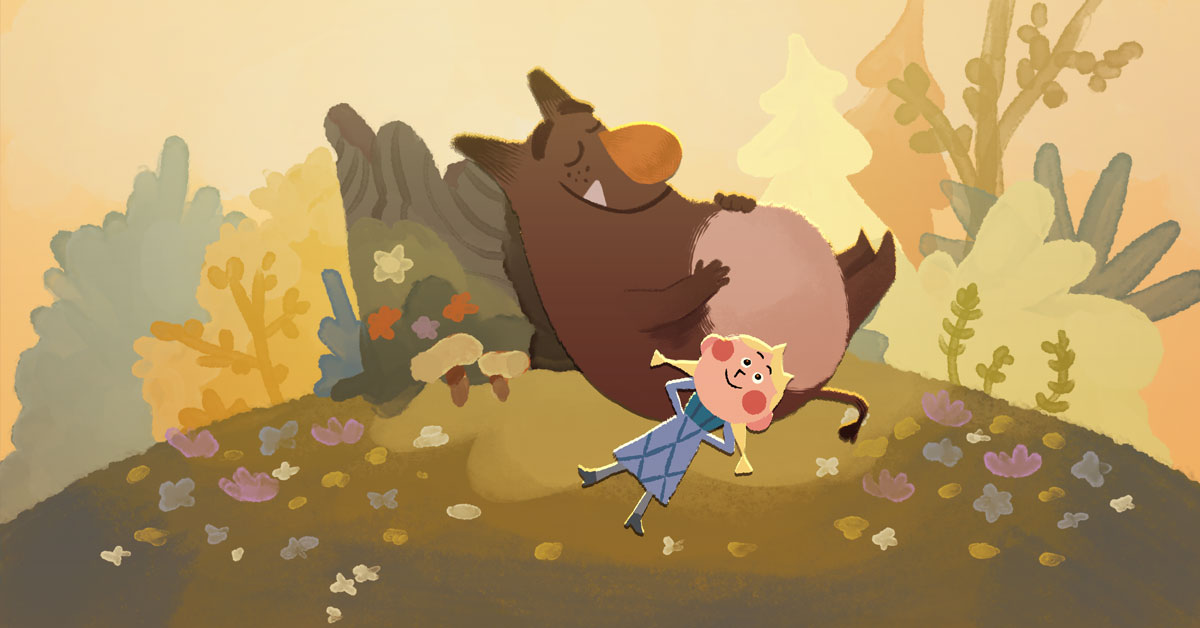
WeAnimate 2025-03-25 | wam#0058
Since 2018, Ouros Animation has been producing gorgeous animation from Arsenalet in Viborg. This award-winning studio keeps the focus tightly on quality, with an artisanal approach to every project. With a portfolio that includes short films, documentaries, TV series development, explainers, and more, Ouros continues to explore new frontiers. We recently spoke with founders Philip Piaget and Rikke Planeta to learn more about their approach and the challenges of managing a boutique animation studio.
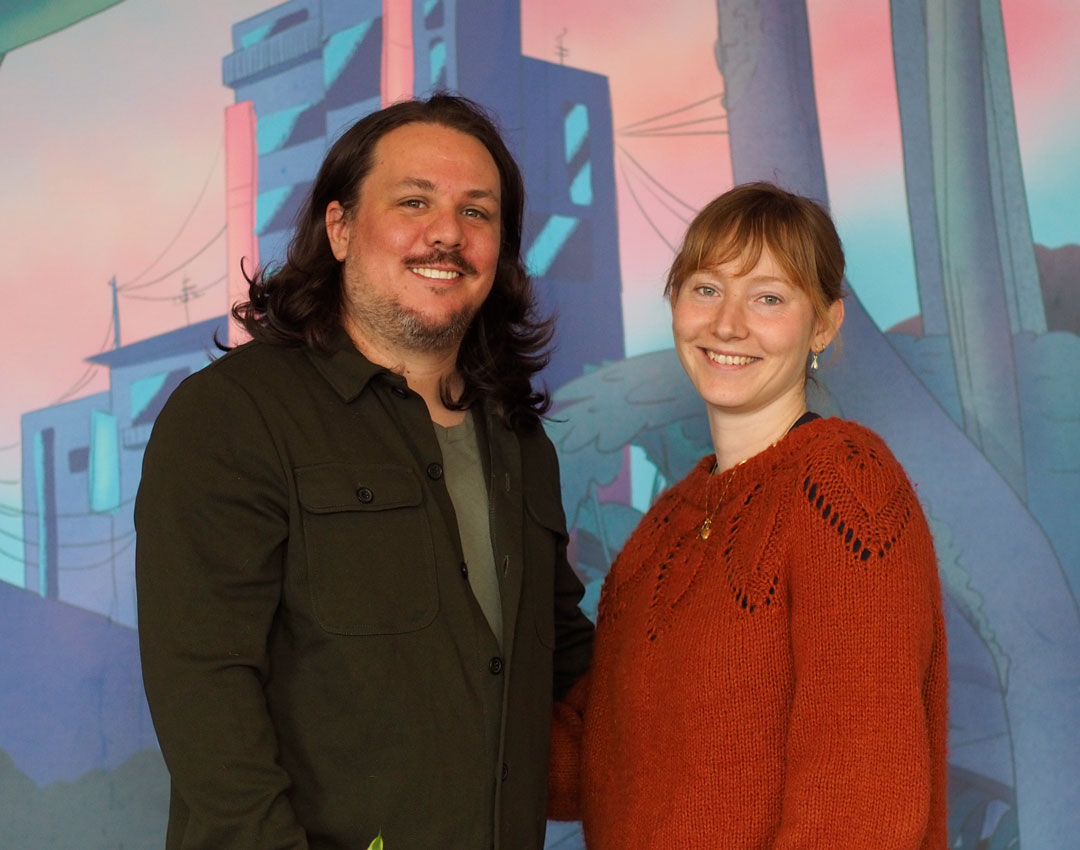
WA: How did Ouros come into being?
Rikke: We first met at The Animation Workshop. Philip was studying animation and I was studying CGI. We worked on a number of group projects together, and collaborated really well, so we wanted to keep that energy going after we graduated. Instead of following the ordinary path of pursuing jobs in the industry, we decided to try to make it on our own. We thought that if we got jobs and started earning money and got comfortable and upgraded our living standards, it would become more difficult to go backwards when starting our own company. We thought that doing it when we’re young, before we get too comfortable doing something else, would be a better time to take the risk and see if it can work.
Philip: I originally come from Mexico, and I lived in Canada for a couple years. I studied classical animation, and worked at some studios doing TV and advertising and short films and things like that. I worked at a studio that really became the model for what I wanted to do in the future, because it was a very creative environment and constantly experimenting with new techniques, and being a bit more passionate about the craft of animation. They let me direct a commercial right away, which demonstrated trust and a horizontal hierarchy that I really liked. The ability to wear many hats was something I really wanted and had enjoyed at The Animation Workshop, and that was also part of the philosophy we wanted to bring to our own studio.
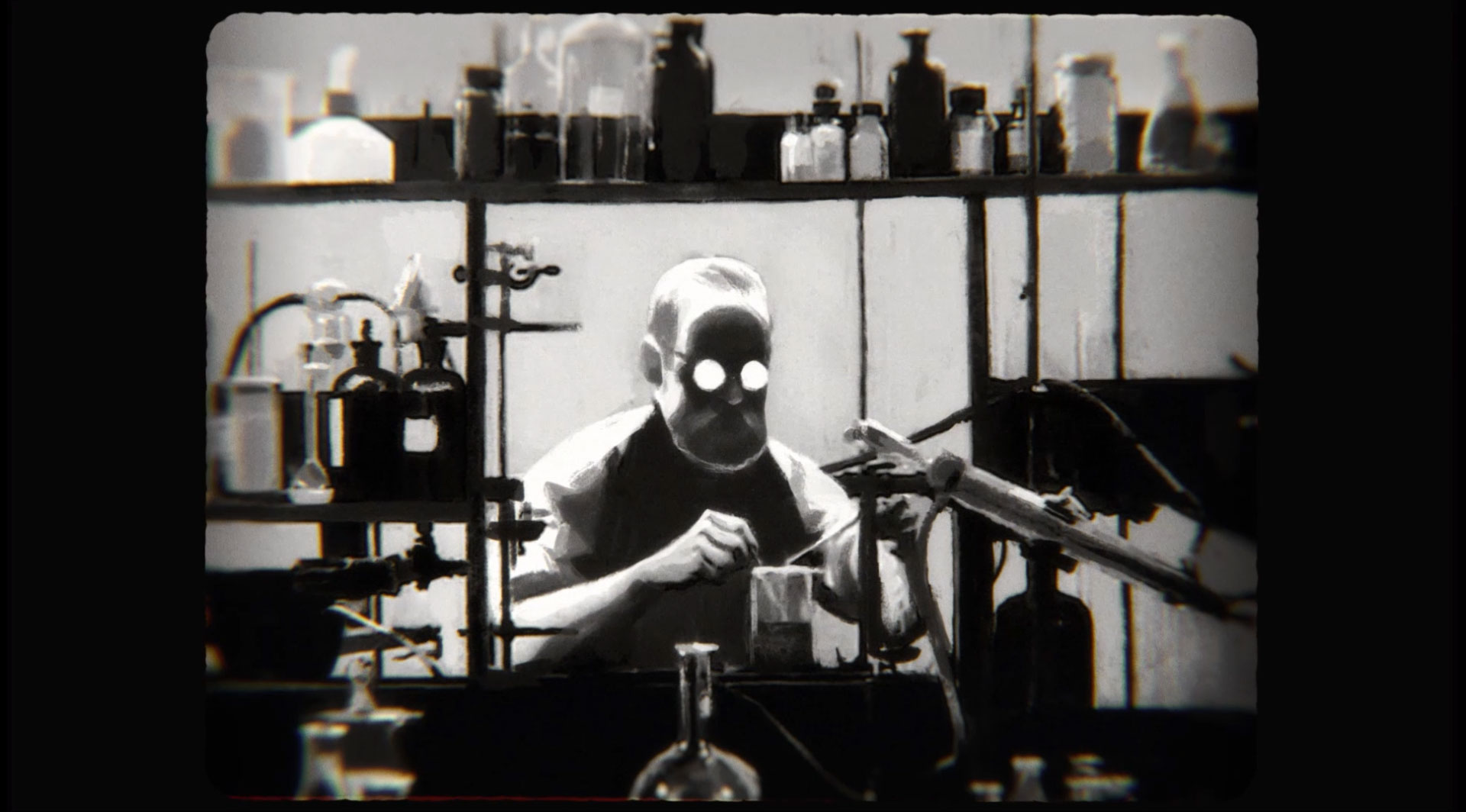
WA: Why did you decide to stay in Viborg and work at Arsenalet?
Philip: Viborg is a less cutthroat environment than Paris or London, or even Copenhagen, where the stakes are a bit higher because of the higher overhead and operational costs. This allows us to take more creative risks, and push it a little bit further than we would be able to otherwise.
Rikke: I’m from Copenhagen, and came to Viborg for the animation school. My original plan was to study and then perhaps travel out into the world, but I’ve been in Viborg for almost 11 years. It has so many upsides: it’s affordable to live in, but it also has a strong animation community, which makes it easier to find freelancers to hire. There is a lot of talent coming out of the school, but also other companies that hire freelance animators, so there is a bit of a circulating workforce that helps you ramp up for a new project. For five years Ouros was just the two of us, along with freelance animators for different projects, but last year we hired Inez Kristina as our in-house producer.
Philip: We’ve always been able to punch a bit above our weight, but adding Inez has been great because it allows us to tackle bigger projects. Our goal is to consistently have all the work that we need as a business, while still taking care with the craft and pushing the quality as high as we can, and she’s part of that long-term plan.

WA: How did you start getting clients and projects as a new studio?
Philip: When we started, we got a lot of new projects just through our personal relationships and people we knew. For example, I freelanced and worked a lot with Uri and Michelle Kranot. Through them, I was exposed to more independent animators who occasionally asked for design work and that kind of thing. In the beginning we also did a lot of work with the local government and library, and it really helped us cut our teeth and learn the business aspect of animation. We also get new projects in response to work we’ve already done; for example, we’ve gotten a lot of work from doing the TED-Ed films, because there are so many eyes on that.
Rikke: We had a very free hand with the TED-Ed projects, so it was a chance to showcase what we can do, and really put our stamp and our identity into it. That’s why we over-delivered a bit; partly because we loved doing it, and partly because we knew it was a way to feature our skills, and might connect us with more projects of the type we really like doing.
Philip: Our bachelor films also really traveled very well. Rikke’s film [Bacchus] is still appearing from time to time at festivals, even so many years later, which has helped us a lot. In the beginning, we did think that we could just do short films because they are so incredible, like poetry. However, you have a different funding model for those.
Rikke: We also need to point out that it was incredibly helpful to be a young company here in the Arsenal in Viborg. There are a lot of other companies here, and a nice sense of sharing. So if someone gets a job that they don’t have capacity for, or if they don’t have time for a project, it’s very common to pass it on to someone else in the house. We got a lot of work in the beginning from that, which was a huge help. We also get more and more projects now through word of mouth. And sometimes we get contacted randomly from people who see our website.
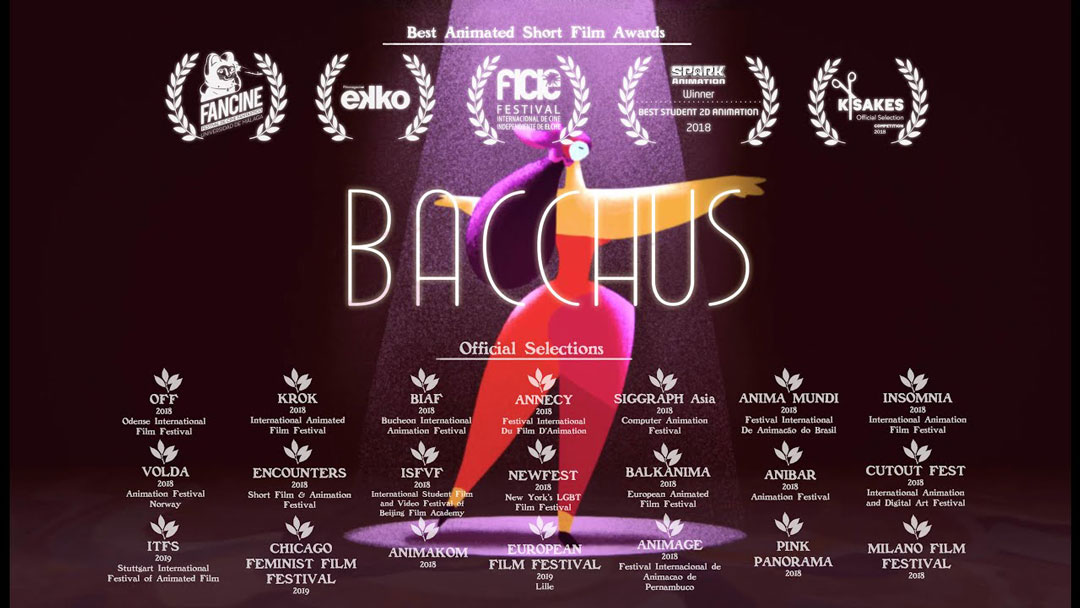
WA: Your work has a really distinctive look – how do you approach design?
Philip: I have a desire to not repeat myself as much as possible, and our art director, Frederico Pirovano, feels the same way. We talk about how it would be so cool to animate in ‘cold-war propaganda’ style, or in charcoal, or in the style of those old hand-made stop motion films… Frederico has been a big part of our success, because he really pushes the design, no matter what we ask of him in terms of style or vibe. He’s really able to capture things, and that collaboration has allowed our work to maintain a sense of consistency, but also freshness and originality. But we definitely have to sacrifice a little production time in order to execute these designs.
Rikke: We care a lot about the design and how things look, but it’s also important how it feels – it has to feel right, and have the right mood. Really strong design and mood can carry the message without needing a ton of animation, and allow you to do all your storytelling in the visuals. If we then have to find a creative solution for how to animate it, then we’ll do that.
Philip: It all comes from our love for a lot of different types of film, and a desire to try new things, so we try to figure out how to achieve those looks within the time and budget that we have. That sometimes means learning new programs, or spending extra time on research. And sometimes it means accepting the limitations of a style. Like, if we’re doing papercut and it’s very geometric, then we just accept that the characters don’t turn. Instead of trying to make them seem volumetric, we try to embrace that limitation and have fun with it.
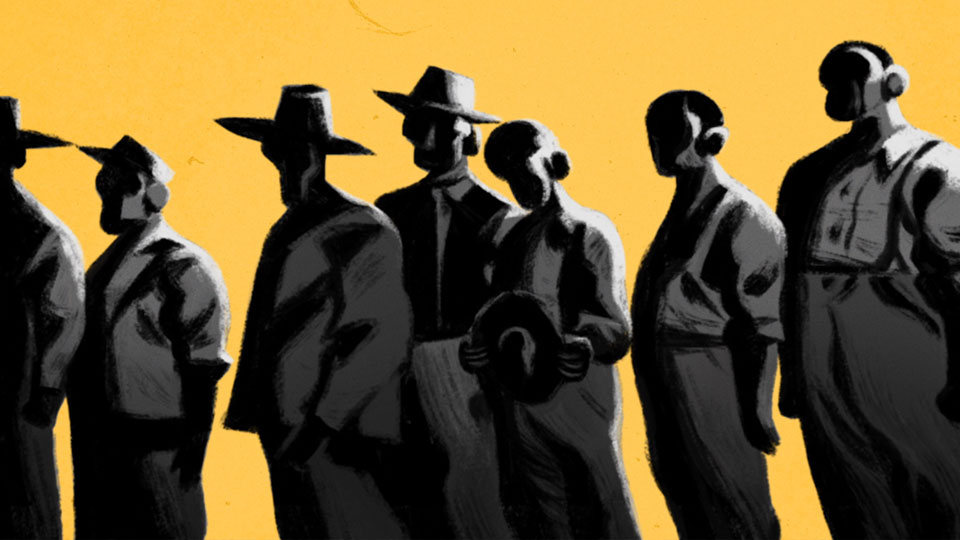
WA: What has been your biggest challenge so far?
Philip: There is a lot of emotional investment in having a company, especially in the art industry, because the work is so important to you. Sometimes all you have is the hope that you’ll get this little bit of support to keep you going for a few months, and then you don’t get it. Those moments can make you jaded, and feel like you don’t do good work and can’t have a successful business. In those moments, you have to just be patient and keep doing the work and wait it out for a while. To be honest, we’re still trying to learn to navigate that part. You kind of have to learn to emotionally detach a bit, and be more objective about your work. You may be in love with something and then look at it two years later and realize that it wasn’t that good. Navigating that self-criticism and emotional investment is the biggest challenge for me.
Rikke: Sometimes you think things are going really well, and then something negative kinda slaps you in the face. But those disappointments may just be bad timing, and not about you or your work at all. When circumstances change, new opportunities can arise for the future.
Philip: So lately we’ve been developing our own original projects and IP. We’ve gone to a lot of pitching forums, and we’ve also helped some other directors develop their original pitches and projects. Going to all those forums has really helped us build new contacts in the European animation community.
Rikke: Part of the fun is not knowing who you are meeting or who you are talking with. You go to Annecy or to Cartoon Forum or something and get into a conversation with someone and realize that there’s a connection and you might be able to work with them later. I find it really fun; you might be pitching to a high-level executive, or to a student – you just don’t know who they are, and then you find out later.
Philip: We do try to build good relationships with everyone, and planting those seeds has really helped us as a small studio.
Rikke: We have our fingers in many pies… no – we have a diversified portfolio, and it’s very exciting. We have all these different things that are up in the air and at different stages of production with different needs, and that also poses its own challenges. Sometimes something moves along very slowly for a long time, and then there’s a sudden burst of energy in that direction, but then something else slows down. We like how this type of momentum keeps things fresh, because it’s not all the same thing all the time. One month we are doing one thing, the next month we are doing something completely different, and it feels new and exciting all the time. That’s part of the fun for us.
WA: What’s next for Ouros?
Philip: We’ve been working on our first VR project, developing a prototype for an anthology co-production with studios in Spain, Portugal, Italy and South America called The Dream Anthology, spearheaded by Cola Animation. We are looking forward to co-produce a feature film with Maria Kruse and Lamberto Anderloni, together with partners in Ireland, although it’s early days. We’re working on getting funding for some short films and documentaries as well…
Rikke: Lately we’ve been working on some development projects with Disney Branded Television and we hope we can continue that. The quality of work is really high and we really value that relationship. Recently we’ve also been producing animation for a feature-length documentary together with Martina Scarpelli and Got Fat Productions that should be released in the coming months. We are also working on a big project involving live concerts for kids. Once the ball is rolling, it kind of keeps on rolling – it’s like magic.
Philip: It’s a shame that we can’t show it yet, but we’ve been doing a lot of 3D work in Blender lately, because we needed a tool that would get us to our desired results more quickly. So we dove into that and have been doing some really interesting work that we’ll be able to show soon. It has facilitated our spirit of experimentation. All these different activities have also helped us develop our diverse skills and helped us expand as a creative studio.
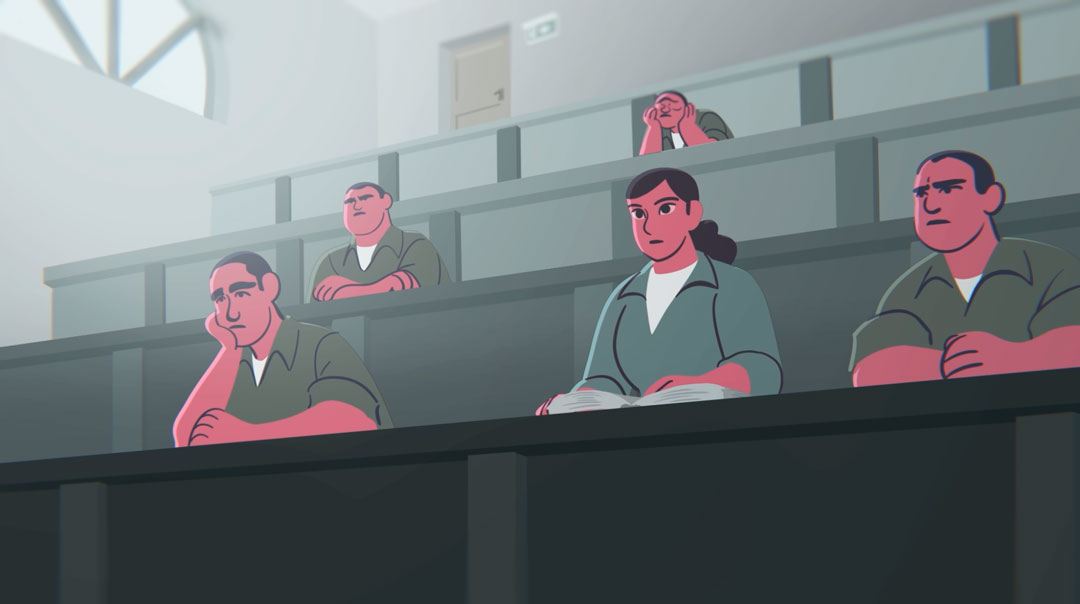
WA: What are your long term goals?
Rikke: It’s very important for us right now to scope and schedule projects more accurately, because we are working on larger projects and hiring more freelancers. We need to make sure that we can also give them realistic working conditions; we don’t want to overwork people just because we can’t make our deadlines. That’s our responsibility. We need to do that properly so we can treat everyone well.
Philip: You can only have so many “burning midnight oil” type of projects where you really push yourself. That was our first few years of the company, but you reach a point where you realize things have to change because it’s not sustainable. So you have to get much smarter much faster, and that’s one way that Inez has been really helpful. We want to grow the studio enough to have long-term staff, so that the people we have collaborated with can work with us on a permanent basis. But we also don’t want to grow to an unsustainable point, where you no longer know who’s working at the studio. We like the boutique feel of it, but want a bit more of the regularity and security of knowing what we’re going to be doing next year. We definitely like having this weird mix of projects, and we would like to do even more things – maybe an installation or more concerts or potentially games…
Rikke: Yes, we are ambitious, and we like the idea of growing and getting bigger jobs. It helps to create some security. But we also like the idea of holding on to what we’ve had so far, prioritizing quality, prioritizing experimentation, and to keep playing around and having fun with animation. I think it’s a fine balance, but we seem to have been able to go in that direction so far and we hope it will continue. We want to really go for it, and as long as we can cling to our artistic ambitions and our integrity, I think the sky is the limit.
Credits
Text: Rebekah Villon
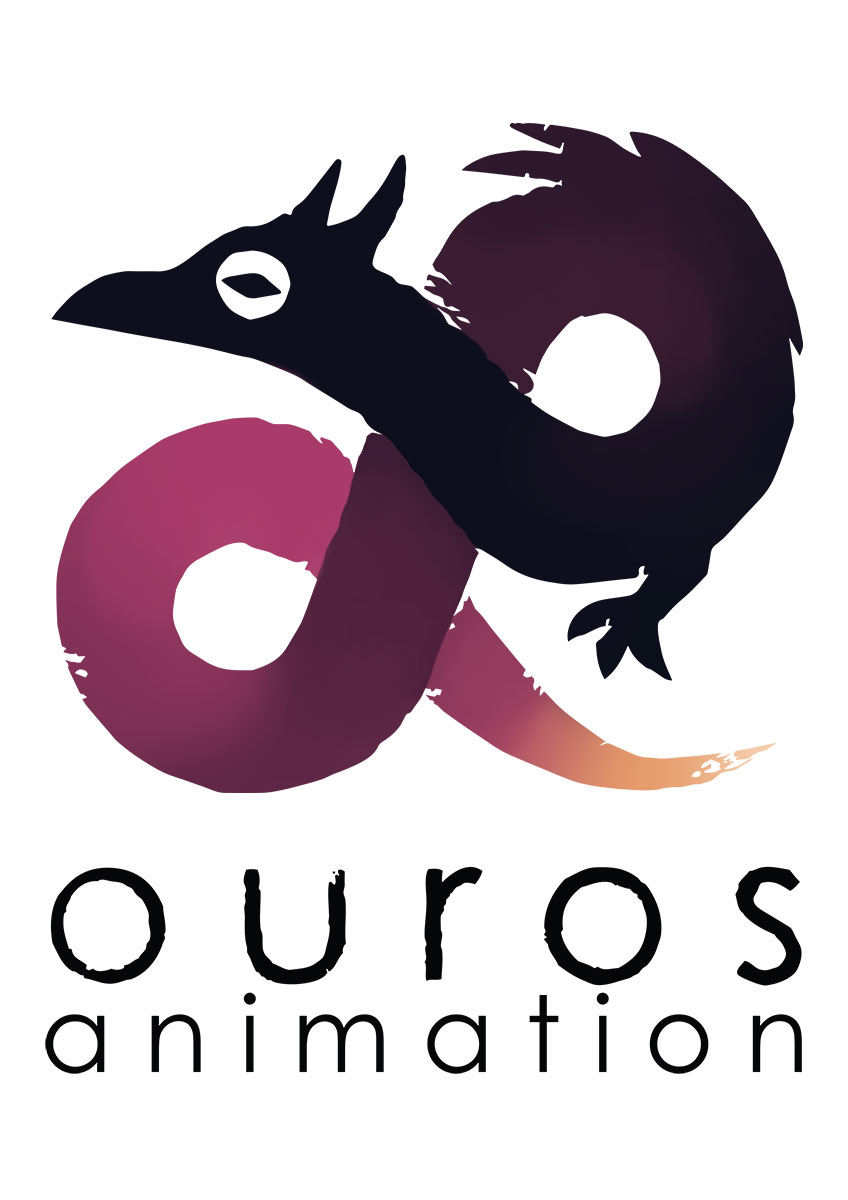
Meet the Artist
Ouros Animation
Stay in touch at: https://www.ouros.net/
Collaborators

WeAnimate Magazine is dedicated to all the people who animate and make things, lines, and ideas come to life.
WeAnimate ApS is founded and owned by The Danish Animation Society (ANIS) www.anis.nu
Tell us what you think? Tell us at hello@weanimate.dk | #weanimate | our Privacy Policy
